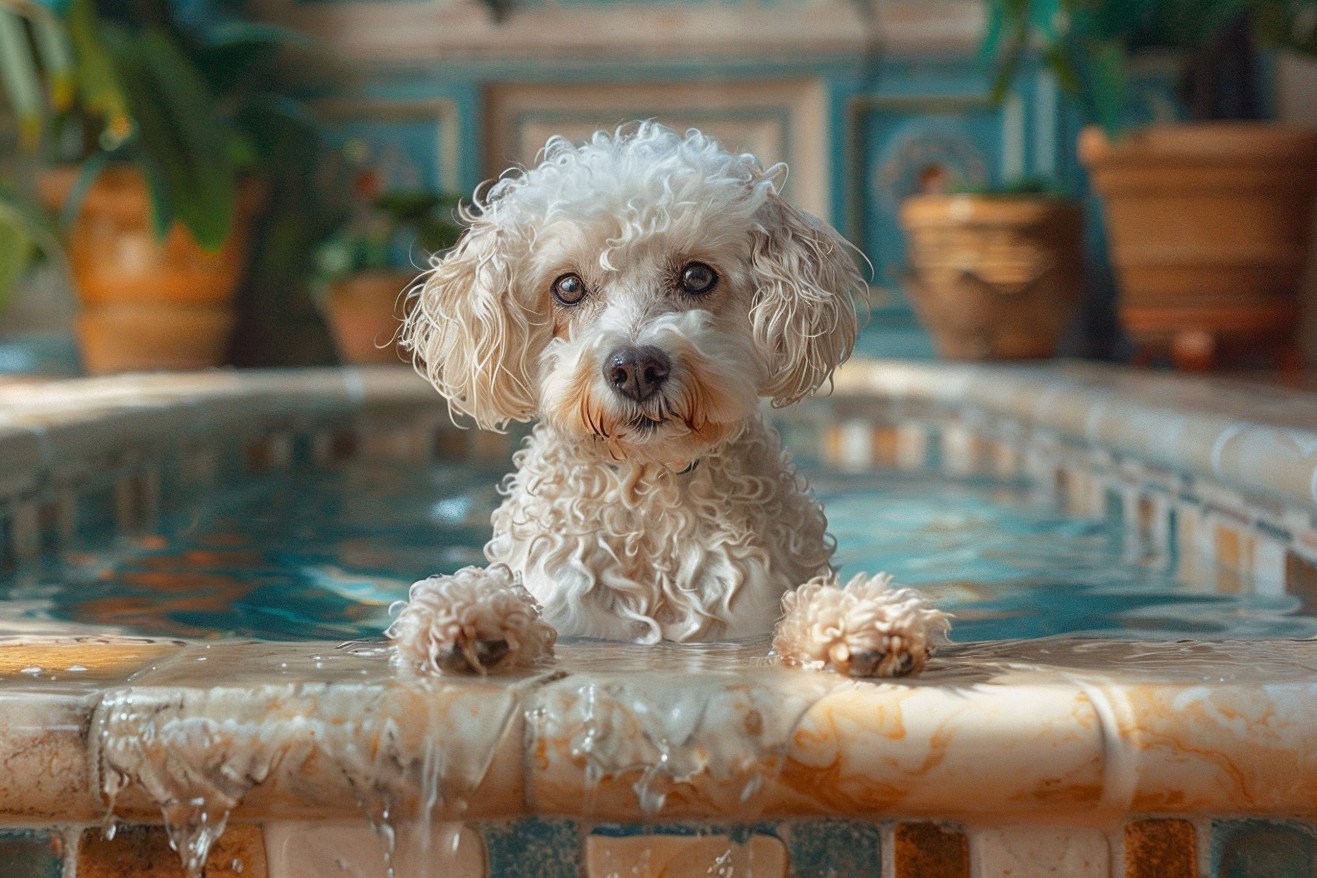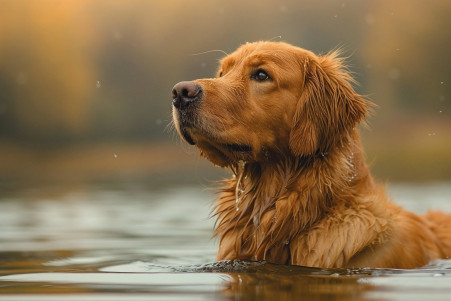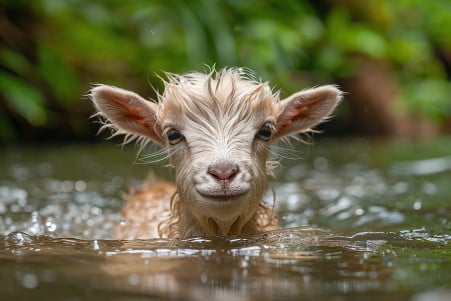Can All Dogs Swim? Exploring Canine Swimming Abilities
30 March 2024 • Updated 29 March 2024

While some dogs seem to be born for the water, a dog's swimming ability can depend on a number of factors including its breed, body shape, and past experiences. Some dogs are natural swimmers - for example, retrievers like Labradors were originally bred to swim - while brachycephalic (short-nosed) breeds like pugs and bulldogs have a much harder time swimming and may even need a life jacket or swimming lessons.
To find out which dogs can swim and why, we'll look at evidence from veterinary science, biology, and animal behavior research. By investigating the physical characteristics, genetics, and behaviors that make some dogs good swimmers, you'll learn more about why some dogs take to the water with ease while others struggle. Whether you're thinking about taking your dog for a swim or you're just interested in learning more about canine swimming abilities, this article has you covered.
Can all dogs swim?
Breed-Specific Traits and Swimming Skills
There are a number of dog breeds that are natural swimmers due to physical traits that make them especially well-suited to aquatic activities. For example, breeds like Labrador Retrievers, Chesapeake Bay Retrievers, and Portuguese Water Dogs were all originally developed to help with water-based tasks like hunting and retrieving game, so swimming is in their genes. These breeds often have webbed toes, water-repellent coats, large lungs, and strong bodies that make them excellent swimmers.
On the other hand, brachycephalic breeds like pugs and bulldogs and short-legged breeds like dachshunds and basset hounds are often less comfortable in the water due to their physical traits. Their short noses can make it hard for them to breathe when swimming, and their bodies are not built for efficient propulsion, making it hard for them to stay afloat. A dog's body shape, coat, bone structure, and lung capacity can all affect their ability to float and swim.
By learning about a breed's history of water-related work and their physical traits, dog owners can learn to predict how comfortable their pet will be in the water. While some dogs will be ready to jump in and swim right away, others will need to be coaxed and may need to wear a life jacket to feel safe. Understanding these differences will help dog owners set realistic goals and ensure that their pets have a positive, safe swimming experience that meets their individual needs and abilities.
Safety and Swimming Tips for Dogs
Even if dogs are natural swimmers, it's still important to make sure that they're safe when they're in the water. The Animal Humane Society suggests that dogs wear life jackets when they're in the water, even if they're good swimmers, to ensure that they stay safe and afloat. Dogs should be introduced to the water in a shallow, calm area, like a kiddie pool or a quiet lake, and positive reinforcement should be used to help them feel more comfortable.
WebMD recommends that dogs are supervised when they're in the water and that pet parents watch for signs of water intoxication, fatigue, and distress. Dogs should be rinsed off after swimming, especially if they've been in saltwater, lakes, or rivers, to prevent skin irritation, ear infections, and other health problems. Pet parents should also be mindful of potential dangers in the water, including strong currents, harmful algal blooms, and other dangerous animals, and take steps to avoid them.
With these safety measures in place and a slow introduction to swimming, pet parents can help their dogs feel more confident and safe in the water. With the right precautions and care, swimming can be a fun, healthy activity for dogs of all breeds and swimming abilities.
How to Teach Your Dog to Swim: A Step-by-Step Guide
With the right training and equipment, all dogs can learn to swim, even those that aren’t natural swimmers. Purina explains that the first step is to find a shallow, calm area, like a backyard pool or kiddie pool, and make sure your dog is wearing a well-fitting life jacket.
Dogster suggests using positive reinforcement and taking your time as you introduce your dog to the water. Let your dog go at their own pace as they get used to the water. You can start by leading them into shallow water and then gradually go deeper as they get more comfortable. PetMD recommends holding your dog by the life jacket handle until they start swimming on their own.
Make sure to keep an eye on the water temperature, currents, and sun exposure and take breaks and offer your dog fresh water. Pupford notes that this positive, slow approach can help even the most reluctant dogs gain confidence in the water. With the right training and safety measures, dog owners can help their pets learn to love the water.
Swimming for Dogs: Exercise and Mental Stimulation
Swimming is a great form of exercise for dogs, especially as it provides a low-impact, full-body workout that can help increase muscle mass and cardiovascular health. The American Kennel Club notes that swimming is particularly good for senior and overweight dogs because it can help them lose weight and stay active without putting pressure on their joints.
In addition to the physical benefits, swimming and water play can also help provide mental stimulation and enrichment for dogs, especially those that are part of high-energy breeds that need a lot of exercise. PetMD explains that introducing your dog to water can also be a great way to bond with them and help them learn to enjoy swimming.
That said, it's important to talk to your vet before starting a swimming regimen, especially if your dog is older or has any health issues. Purina notes that some dogs, like pugs and bulldogs, may have a harder time swimming because of their body shape, and that they may need to be watched more closely or take other precautions.
Conclusion: Enjoying the Water With Your Water-Loving Dog
While some dogs are natural swimmers, others may need a little extra help and encouragement to become comfortable in the water. Knowing a dog's breed and physical traits can help you understand their swimming ability and what to expect. Safety, a slow introduction, and positive reinforcement can help all dogs become more comfortable and confident in the water.
Swimming can be a great way for dogs to get exercise, mental stimulation, and bonding time with their owners. Whether your dog is a natural water dog or a reluctant landlubber, accepting and working with their individual comfort level and ability can lead to a lifetime of fun in the water.


